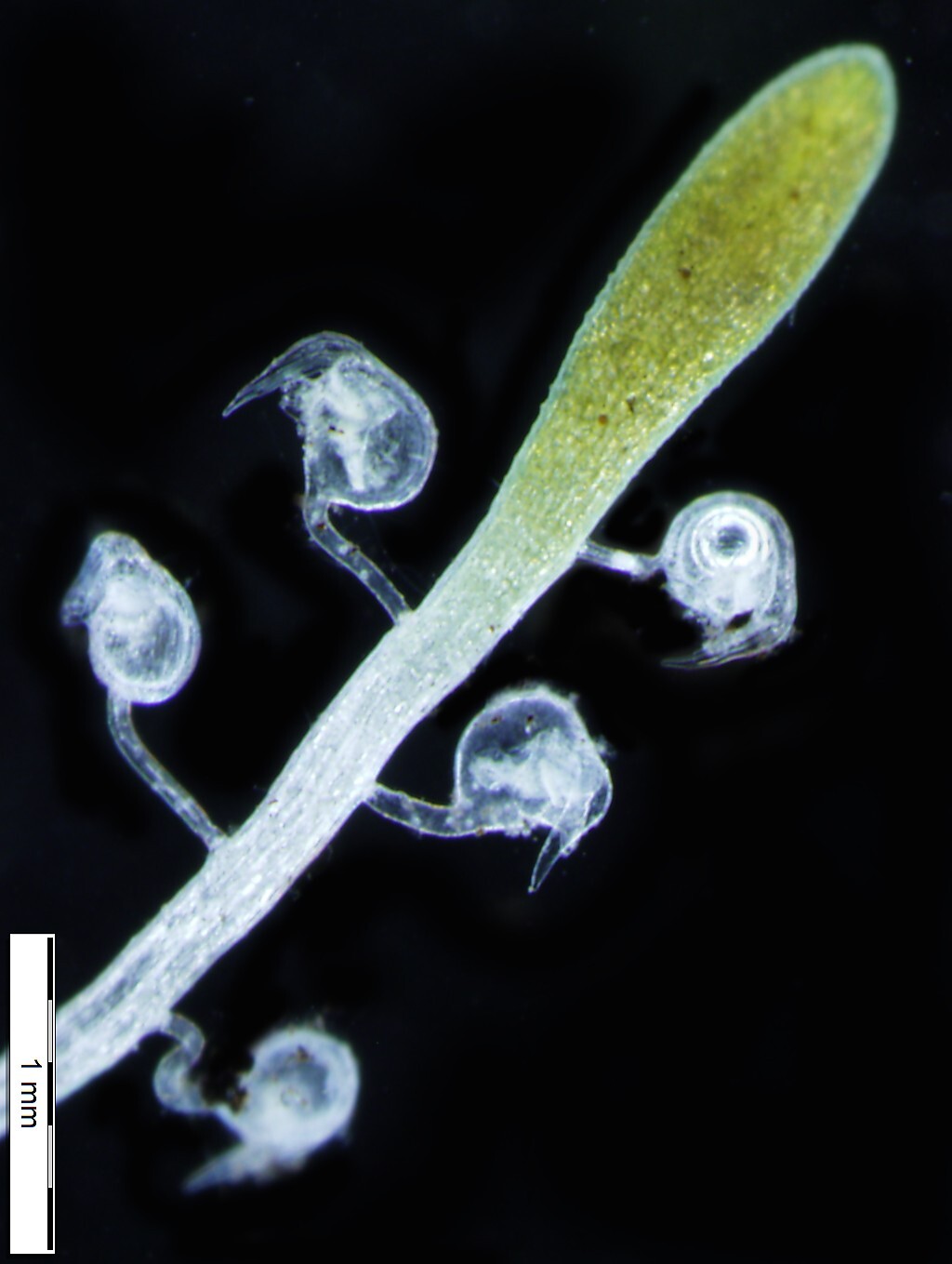Utricularia lateriflora
R.Br. Tiny BladderwortTerrestrial perennial; stolons to c. 5 cm long. Leaves few, narrow-obovate, to c. 5 cm long, 0.3–0.5 mm wide. Traps numerous on rhizoids, stolons and petioles, ovoid, 0.5–0.7 mm long. Racemes 1–several, 3–30 cm long, mostly 1–5-flowered; sterile bracts often numerous, smaller than fertile bracts; fertile bracts basifixed, ovate, c. 1 mm long; bracteoles linear, longer than bracts; calyx-lobes subequal, elliptic to broad-ovate, c. 2 mm long. Corolla 4–12 mm long, pale lilac, mauve or violet with a white or yellow spot at base of lower lip; upper lip ovate, truncate and deeply emarginate; lower lip larger, c. circular in outline, rounded to retuse; palate with a slightly raised verrucose rim; spur narrow-conical, slightly longer than lower lip. Capsule globose, c. 3 mm diam.; seeds globose, c. 0.25 mm diam. Flowers mostly Oct.–Feb.
Wim, GleP, VVP, GipP, OtP, WaP, GGr, EGL, EGU, WPro, HSF, OtR. Also SA, Qld, NSW, Tas. Scattered across southern Victoria in heathland on wet, sandy or peaty soils.
Jeanes, J.A. (1999). Lentibulariaceae. In: Walsh, N.G.; Entwisle, T.J., Flora of Victoria Vol. 4, Cornaceae to Asteraceae, pp. 547–553. Inkata Press, Melbourne.
 Spinning
Spinning


